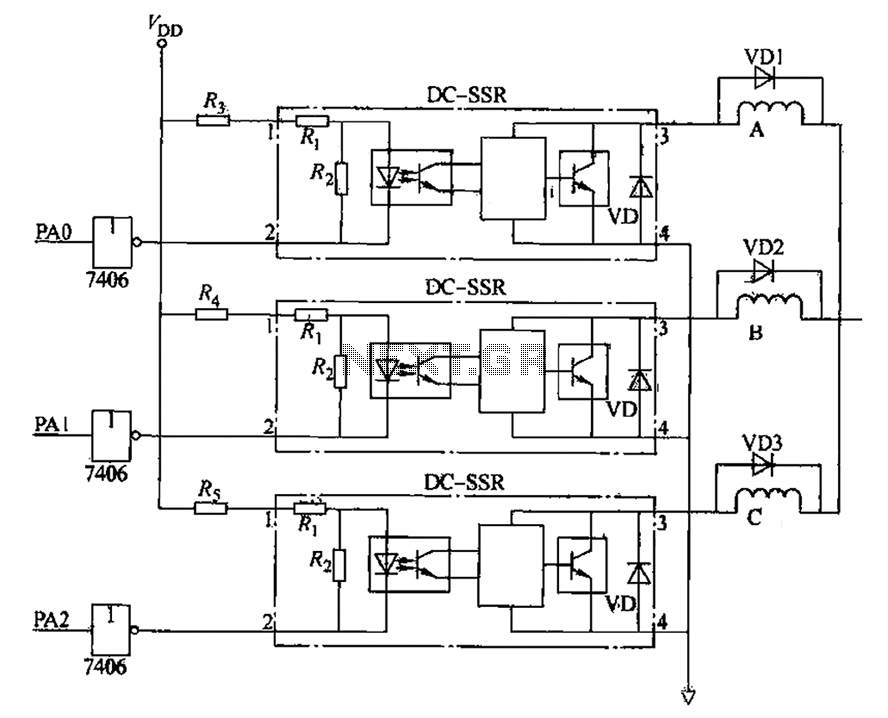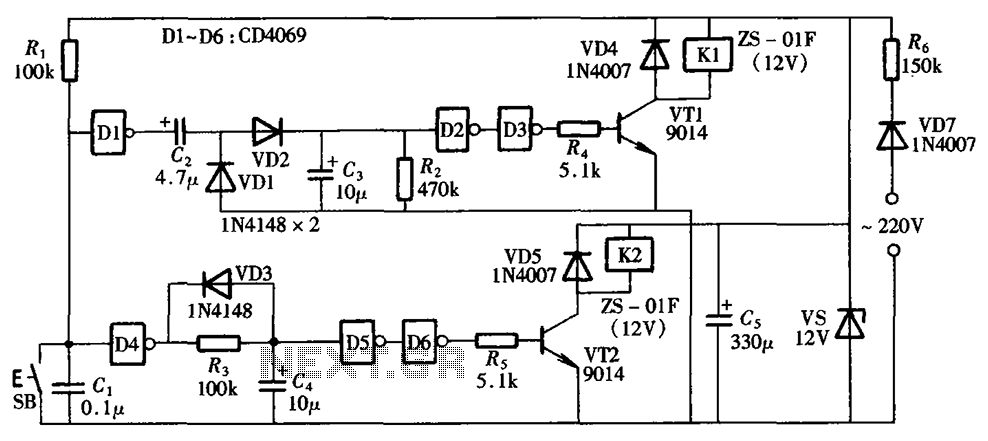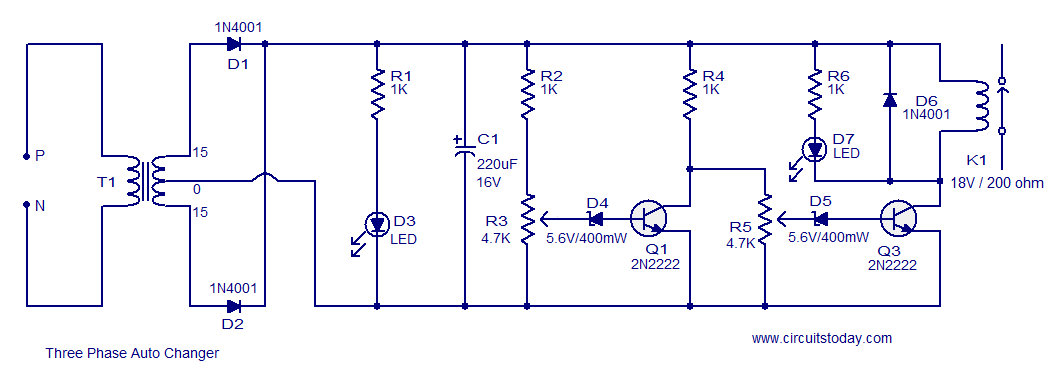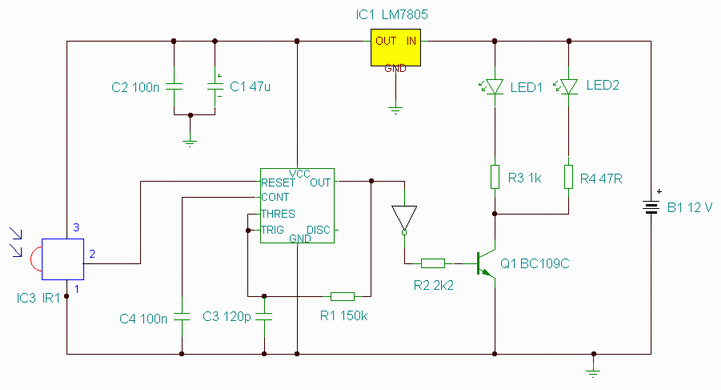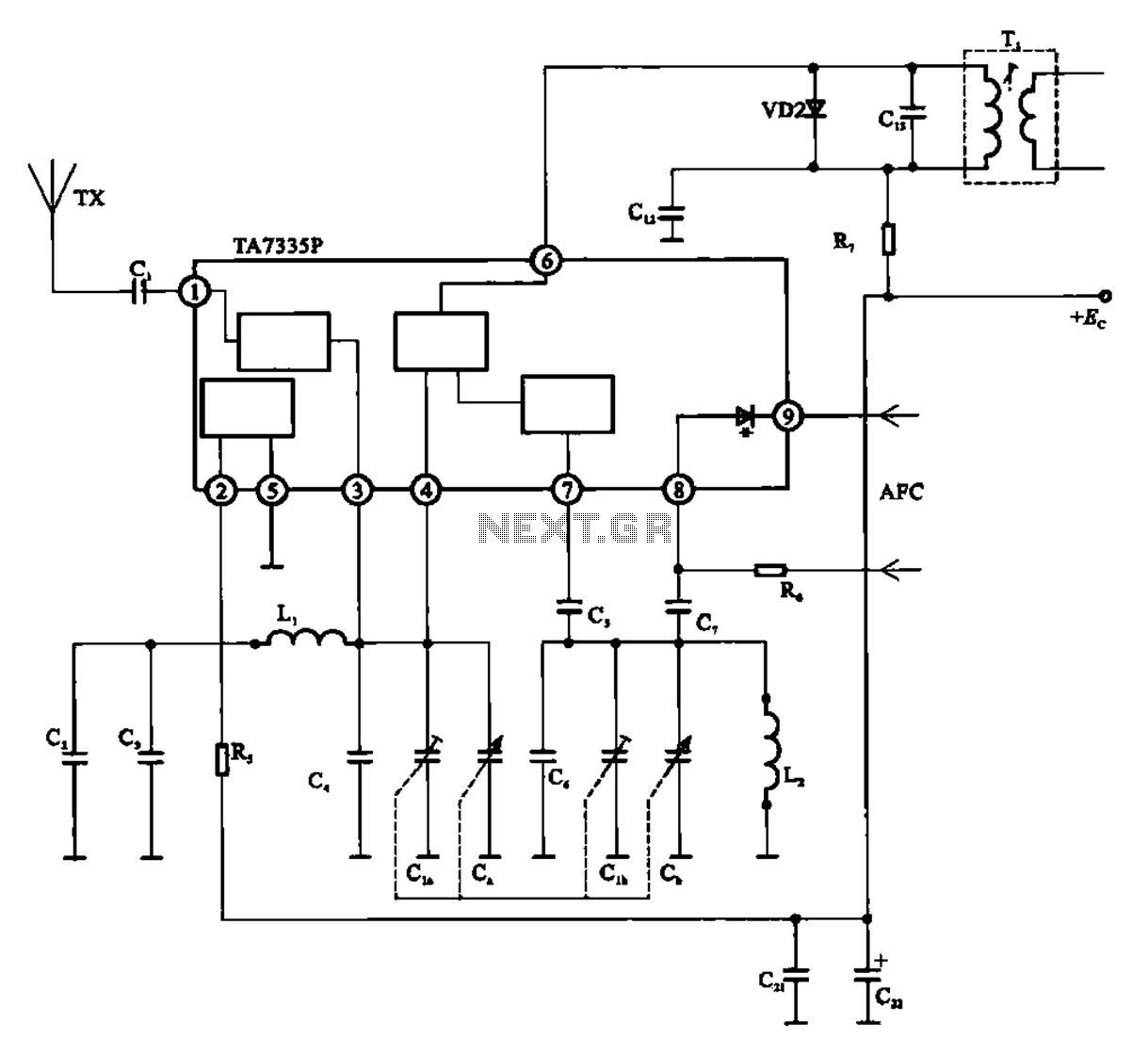
Morse Practice Oscillator Circuit

A 555 timer configured as an astable multivibrator is used in this circuit to generate an audio note. The capacitance value can be changed to vary the audio note as desired.
The circuit utilizes a 555 timer IC, which is a versatile and widely used component in timing applications. In the astable mode, the 555 timer continuously oscillates between its high and low states, producing a square wave output. This square wave can be fed into a speaker or a piezo buzzer to generate audible tones.
The frequency of the generated audio note is determined by the resistor and capacitor values connected to the 555 timer. Specifically, two resistors (R1 and R2) and a capacitor (C1) are used to set the timing intervals. The frequency (f) of oscillation can be calculated using the formula:
f = 1.44 / ((R1 + 2 * R2) * C1)
By adjusting the values of R1, R2, and C1, the frequency of the output signal can be modified, allowing for a range of audio notes to be produced. For instance, increasing the capacitance of C1 will lower the frequency, resulting in a deeper tone, while decreasing it will raise the frequency, producing a higher pitch.
Additionally, the output of the 555 timer can be connected to a low-pass filter or an amplifier circuit to enhance the audio quality or adjust the volume. This flexibility makes the astable multivibrator configuration of the 555 timer suitable for various audio applications, including alarms, sound effects, and musical notes in electronic devices. A 555 timer configured as an astable multivibrator is used in this circuit lo generate an audio note. CI can be changed to vary the audio note as desired.
The circuit utilizes a 555 timer IC, which is a versatile and widely used component in timing applications. In the astable mode, the 555 timer continuously oscillates between its high and low states, producing a square wave output. This square wave can be fed into a speaker or a piezo buzzer to generate audible tones.
The frequency of the generated audio note is determined by the resistor and capacitor values connected to the 555 timer. Specifically, two resistors (R1 and R2) and a capacitor (C1) are used to set the timing intervals. The frequency (f) of oscillation can be calculated using the formula:
f = 1.44 / ((R1 + 2 * R2) * C1)
By adjusting the values of R1, R2, and C1, the frequency of the output signal can be modified, allowing for a range of audio notes to be produced. For instance, increasing the capacitance of C1 will lower the frequency, resulting in a deeper tone, while decreasing it will raise the frequency, producing a higher pitch.
Additionally, the output of the 555 timer can be connected to a low-pass filter or an amplifier circuit to enhance the audio quality or adjust the volume. This flexibility makes the astable multivibrator configuration of the 555 timer suitable for various audio applications, including alarms, sound effects, and musical notes in electronic devices. A 555 timer configured as an astable multivibrator is used in this circuit lo generate an audio note. CI can be changed to vary the audio note as desired.
